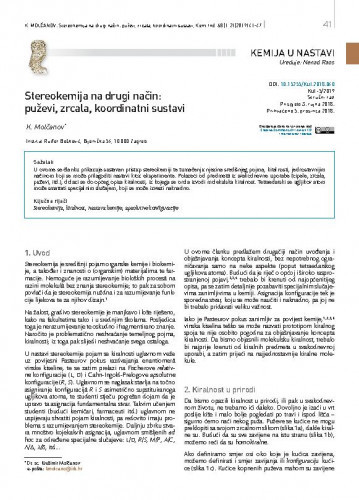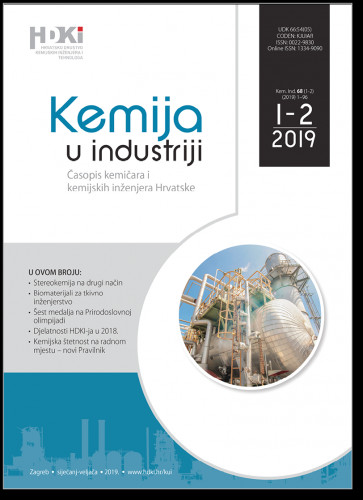U ovome se članku prikazuje sustavan pristup stereokemiji te tumačenju njezina središnjeg pojma, kiralnosti, jednostavnijim načinom koji se može prilagoditi nastavi kroz eksperimente. Polazeći od predmetâ iz svakodnevne uporabe (cipele, zrcala, puževi, itd.), dolazi se do općeg opisa kiralnosti, iz kojega se onda izvodi molekulska kiralnost. Tetraedarski se ugljikov atom može smatrati specijalnim slučajem, koji se može izvesti naknadno.; Chirality is the central concept of stereochemistry, but remains neglected at both high school and university levels. It is typically introduced through description of Pasteur’s historic resolution of enantiomers of tartaric acid, and teaching is usually centred on correct assignation of configurations R and S. This “classical” approach rarely proceeds further, thus leaving serious gaps in the students’ knowledge. In this paper, new and systematic approach to the introduction of the concept of chirality, is described. We start with every-day objects (shoes, mirrors, snails, etc.), from which a generalised concept of chirality is introduced. Once this groundwork is laid, molecular chirality is deduced; its commonly occurring special cases (such as R and S configurations of the tetrahedral carbon atom) are discussed later. This method of teaching basic concepts of stereochemistry can be easily adopted to learning through experiments.
Sažetak

 Kemija u industriji : 68,1-2(2019) / glavni i odgovorni urednik Nenad Bolf.
Kemija u industriji : 68,1-2(2019) / glavni i odgovorni urednik Nenad Bolf.